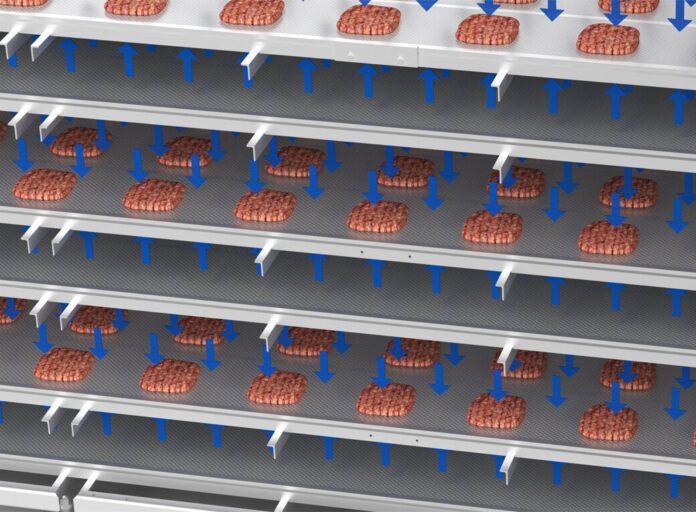Impingement freezing is an extremely effective method of freezing food and is used quite extensively in the food processing industry where it can be employed for freezing products from ambient temperature down to around -20°C (0°F) within minutes. It is particularly useful for freezing large batches of product because of its high efficiency.
In addition to its effectiveness, impingement freezing has been shown to produce less drip loss than conventional immersion chilling and has potential applications in other areas such as dairy products and seafood where drip loss is an issue.
Impingement Freezing uses freezing air jets that are used to freeze almost anything, at speeds rivalling other methods, but with special distinctions in tow. The freezing process does not use any refrigerant gases or other chemicals directly on the product but instead uses pressurised air to create an impingement effect.
The main benefits of this technology include:
- Low running costs compared to most other solutions, for example cryogenic freezing.
- High production capacity – impingement freezing can achieve remarkably high production capacity thanks to its unique capabilities.
- Green and sustainable freezing – there is minimal waste or release of chemicals from the use of impingement freezing, which reduces the impact on the environment.
What’s unique about it?
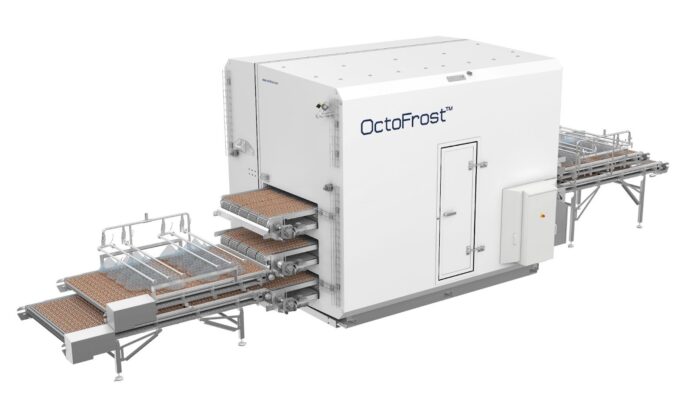
Impingement freezers are more efficient than cryogenic systems in terms of lower running cost. The impingement freezing process is continuous and can be run for a longer cycle, depending on the product being frozen. This makes it particularly suitable for larger batches or products that need to be frozen quickly.
In addition, the impingement freezing process is so fast that it allows you to freeze a product within minutes rather than hours or days as with traditional mechanical freezers. The high volume and speed of cold air streams is extremely fast, which means that the process can be completed quickly and efficiently.
One of the main advantages of this method is its ability to freeze both sides of a food product at the same time: top and bottom or front and back – depending on how it is processed. This method also allows for flexible lines which allow you to freeze assorted products at separate times or even add new products during production (e.g., when making pizzas or flatbreads).
Impingement freezers feature high-velocity airflow technology for rapid IQF (individual quick freezing) of food products.
Impingement freezers are designed for use in the food processing industry, from meat to seafood. They are ideal for both commercial and industrial applications including:
Meat Processing – Beef, lamb, IQF burgers, and pork.
Fish and seafood – Frozen fish fillets or blocks and shrimps.
Excellent product quality
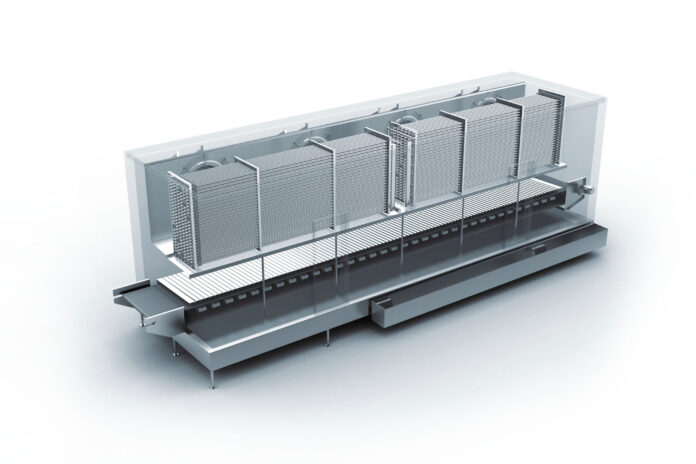
A leading cause of product damage in frozen processing is the formation of ice crystals. Ice crystals are formed when water freezes. The size of the ice crystal depends on how fast it freezes and how much energy is available for its growth.
In most frozen food processing operations, ice crystals form slowly and have time to grow as large as possible before freezing completes. This results in large, hard ice crystals that can damage the product’s membrane, leading to loss of moisture and a lower yield. This is especially problematic for the seafood industry where delicate products like shrimp can lose their weight during the freezing process.
The principle behind the impingement freezing method is that minimal ice crystals are formed on the surface of food products. These crystals can only grow to a smaller size, thanks to the processing speed. This prevents them from getting damaged during the freezing process and results in a perfectly smooth finished product.
The main benefit of using this method over other types of freezers is that it’s faster than conventional freezing methods but produces a higher quality product too!
Food safety
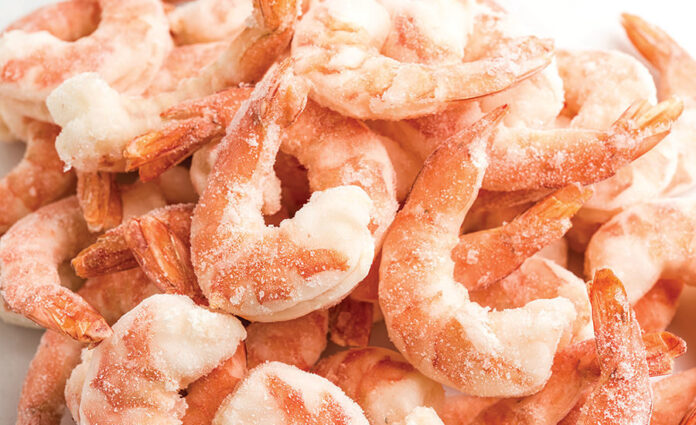
Impingement Freezing is a relatively new and unique freezing method. It is a very hygienic and food-safe freezing method. In recent years, it has become more popular in the food industry because it can deliver high-quality products with minimal processing time and energy consumption.
The main advantage of using an Impingement Freezer is that the product stays fresh longer and preserves its taste or texture over a long time. In addition, impingement freezers can be much easier to clean than large spiral freezers, which further helps to maintain food safety standards.
Certain manufacturers have spearheaded the charge toward reaching greater food safety ratings for their machinery. For instance, the OctoFrost Multi-Level Impingement Freezer is significantly easier to clean than any spiral freezer due to its compact design and easy access, which allows thorough inspection of the freezer and mitigates any risk of hygiene.
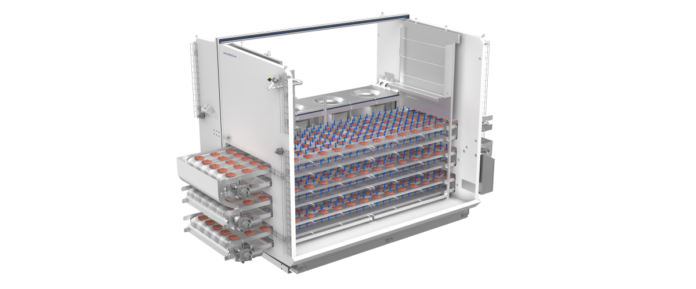
Also, the OctoFrost Multi-Level Impingement Freezer allows for more efficient use of factory space, allowing for more products to be loaded thanks to its three conveyor straight belts, which can double production capacity per square metre of factory space.
The main advantage of an impingement freezer is its flexibility in terms of location. Because of its compact design, they can be installed in existing buildings with minimal disruption to the environment or building structure.
It is energy efficient and will save you money overall by using less energy than a traditional impingement freezer. The OctoFrost Multi-Level Impingement Freezer also runs at lower temperatures, which means there is less heat loss during operation, resulting in reduced energy usage and costs.
It can be used for freezing multiple products up to 25mm of thickness, such as seafood, meat, dumplings, ham or poultry.
The Impingement Freezer is an important development in the food processing industry. It significantly improves both product yield and quality, while also reducing labour costs. These benefits could make the Impingement Freezer a crucial step in the future of industrial frozen foods.

